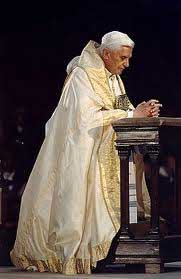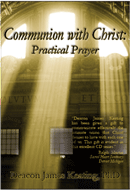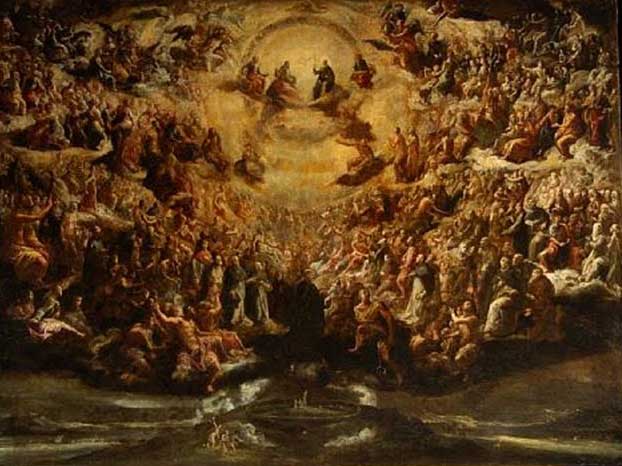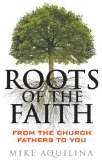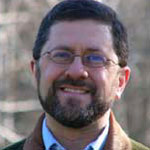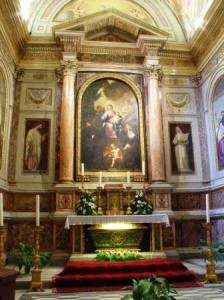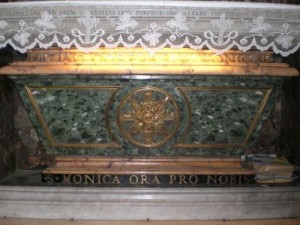Episode 22 Beginning to Pray: Â St. Catherine of Siena
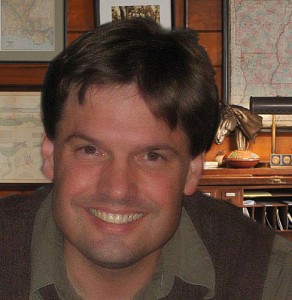
[powerpress]
From Dr. Lilles’ “Beginning to Pray” Â blog site:
Catherine of Siena – passion for truth
She is an important figure for those who see a rediscovery of prayer as the force of renewal in the Church. Because she put her devotion to Christ first, she found herself with a spiritual mission to help restore the life and unity of Christ’s body. Some of her efforts met with a little success. But as she approached her death at the age of 33, her lifetime of effort in building up the Church seemed to be in vain. Corruption, scandal, cowardice – and most of all indifference – seemed to infect the Church even more. (For more on her life, go tohttp://www.newadvent.org/cathen/03447a.htm.) Yet she never lost hope and she persevered in prayer. This is because she understood the love and mercy of God.She was uneducated, but in 1377, by a miracle, she learned to write. Even so she retained secretaries to whom she dictated most of her thoughts. Her master work on the spiritual life is known as the Dialogues. These are conversations between her soul and God the Father. God the Father reveals his deep love for his Son and his plan to build up the Church. One of the beautiful aspects of this conversation is the Father’s explanation for how each soul can come to know Jesus.
Christ is the bridge to the Father and we cross this bridge by allowing our hearts to be pierced by what the Lord has done for us. The passion of Christ reveals at once the truth about who God is and who we are in his sight. For her, among the greatest blocks to the spiritual life is ignorance. Knowledge of God and knowledge of self go hand in hand in progressing toward spiritual maturity. But the knowing is not simply an intellectual trip. It as the kind of knowing informed by the loving affection of a real friendship. The friendship she describes in tender terms evokes the deepest joys and sorrows all at once.
The gift of tears, so central to early Dominican spirituality, is a beautiful part of this description. She presents those holy affections as the only proper response to the great love revealed in Christ crucified. These tears move us away from sin and into the very heart of God. She describes this as a journey that begins with kissing the feet of Jesus and entering into his wounded side. For her, intimacy with the Lord is always through the Cross and informed by a profound gratitude and humility.
One other beautiful feature of her spirituality is her understanding of virtue. This understanding is not quite classical in that she goes beyond the generic definition of a virtue as a good habit. Instead, she addresses a problem that is related to life in the Church. She notices that different Christians excel at different virtues. One might have a special aptitude for the art of getting on with others and is a special source of justice in the community. Another may be especially able to enter into the heart of someone enduring great difficulty and brings to the Church a particular awareness of mercy. Still another might have a profound gift of prayer. The question she takes up is why has the Father given different gifts to different members of the Body of Christ.
In the Dialogues, the Father explains to her that He has distributed his bountiful gifts in this way so that each member of the Body of Christ must rely on all the other members and at the same time each member bears a particular responsibility to support the Body of Christ commensurate to the gifts he has been given. In other words, his has distributed his gifts in a manner that disposes us to love one another. And the Father is counting on this mutual love, this genuine fellowship. It is part of His plan that as we cross Christ the Bridge we enter into communion with Him not merely individually, but together as a family.
The family of God requires a new kind of love, a love which only God can give us. A beautiful foundation is laid for what will later be understood as a “call within a call,” that particular mission each one is entrusted with in the eternal loving plan of God. On one hand, answering this call involves some suffering – just as Mother Theresa in our own time discovered. But those who endure this would not have it any other way. There is a certain joy and fullness of life that one discovers when one generously embraces the loving plan of the Father. The possibility of this joyful fulness makes Catherine’s message to the Church dynamically attractive.
For those beginning to pray, Catherine sheds light on the importance of truth, devotion to Christ and the life of the Church. These things organically hang together in her vision of the spiritual life so that growing in prayer goes beyond the merely therapeutic: it opens up the possibility of fully thriving, of living life to the full.
Dr. Anthony Lilles is a Catholic husband and father of three teaching Spiritual Theology at St. John Vianney Theological Seminary. He  teaches spiritual theology and spiritual direction to transitional deacons, and the spiritual classics to the men who enter the Spirituality Year, a year of prayer in preparation for seminary formation.  He is the author of the “Beginning to Pray”  catholic blog spot.
For other episodes in the series visit the Discerning Hearts page for Dr. Anthony Lilles
Tags: Anthony Lilles, Church, prayer, spiritual life, st catherine of siena
This entry was posted on Monday, April 29th, 2013 at 7:26 am
You can follow any responses to this entry through the RSS 2.0 feed.
Episode 4- The School of Prayer: Reflections on the teachings of Pope Benedict XVI –   Jacob wrestling with Angel.  The mystery of the name.  We have to let God ask us who we are or will you resist and remain isolated?  Our prayer is only going to be fruitful if we surrender ourselves to the question…who are you?  Like  Jacob, once we give over our name then God can begin to transfigure that name, or in other words, our persons to be more inline with His will, His love, His power.  Eventually, in prayer, we have to enter into the struggle…what is really going on in our souls, in our hearts and are our wrestling with God’s love.   We yield our identity to God’s love.
Jacob wrestling with Angel.  The mystery of the name.  We have to let God ask us who we are or will you resist and remain isolated?  Our prayer is only going to be fruitful if we surrender ourselves to the question…who are you?  Like  Jacob, once we give over our name then God can begin to transfigure that name, or in other words, our persons to be more inline with His will, His love, His power.  Eventually, in prayer, we have to enter into the struggle…what is really going on in our souls, in our hearts and are our wrestling with God’s love.   We yield our identity to God’s love.
The wounding of Jacob by the Angel. Â It is the symbol of the wound, the opening of the self, which symbolizes an entryway to vulnerability…God is deeply affecting us. Â God’s love, concern, and fascination with us is how He enters into our being and “wounds” us. Â If we could “be still” and allow Him to love us, He becomes victorious within us.
The name we yield to God is our heart…the core of our being.  At Baptism, we give over our name, so we give the power over to God over us.  How the “wrestling occurs” and if we stay in it long enough God “wounds” us, into His hands we commend our “spirits”.  How does Jesus transform even this event?
[powerpress]
Deacon James Keating, PhD, the director of Theological Formation for the Institute for Priestly Formation, located at Creighton University, in Omaha.
From  Pope Benedict’s 4 audience on prayer:
Dear brothers and sisters, our entire lives are like this long night of struggle and prayer, spent in desiring and asking for God’s blessing, which cannot be grabbed or won through our own strength but must be received with humility from him as a gratuitous gift that ultimately allows us to recognize the Lord’s face. And when this happens, our entire reality changes; we receive a new name and God’s blessing. And, what is more: Jacob, who receives a new name, and becomes Israel, also gives a new name to the place where he wrestled with God, where he prayed; he renames it Penuel, which means: “The Face of Godâ€. With this name he recognizes that this place is filled with the Lord’s presence, making that land sacred and thus leaving a memorial of that mysterious encounter with God. Whoever allows himself to be blessed by God, who abandons himself to God, who permits himself to be transformed by God, renders a blessing to the world. May the Lord help us to fight the good fight of the faith (cf. 1 Tim 6:12; 2 Tim 4:7) and to ask, in prayer, for his blessing, that he may renew us in the expectation of beholding his Face. Thank you.
For more information on the “Institute of Priestly Formation†and for other material available by Deacon Keating, just click here
Don’t forget to pickup a copy of “Communion with Christ†, it is one of the best audio sets on prayer…ever!
Check out Deacon Keating’s “Discerning Heart†page
Tags: creighton university, Deacon James Keating, heart, prayer
This entry was posted on Monday, April 29th, 2013 at 12:55 am
You can follow any responses to this entry through the RSS 2.0 feed.
Episode 3- The School of Prayer: Reflections on the teachings of Pope Benedict XVI –   Abraham the great Patriarch who prays in intercession for Sodom and Gomorrah.  The mystery of intercessory prayer and God’s great mercy.  When we persist in prayer, like Abraham, the more we come to know God and trust in His love for us.  How sin corrupts our capacity to receive God’s movement of protection and love.  How the sacrifice of Christ opens the door to the mystery.  If we can learn how to pray, then we learn how to be loved.  How do we pray for others?
Abraham the great Patriarch who prays in intercession for Sodom and Gomorrah.  The mystery of intercessory prayer and God’s great mercy.  When we persist in prayer, like Abraham, the more we come to know God and trust in His love for us.  How sin corrupts our capacity to receive God’s movement of protection and love.  How the sacrifice of Christ opens the door to the mystery.  If we can learn how to pray, then we learn how to be loved.  How do we pray for others?
[powerpress]
Deacon James Keating, PhD, the director of Theological Formation for the Institute for Priestly Formation, located at Creighton University, in Omaha.
From  Pope Benedict’s 3 audience on prayer:
This is the power of prayer. For through intercession, the prayer to God for the salvation of others, the desire for salvation which God nourishes for sinful man is demonstrated and expressed. Evil, in fact, cannot be accepted, it must be identified and destroyed through punishment: The destruction of Sodom had exactly this function.
For more information on the “Institute of Priestly Formation†and for other material available by Deacon Keating, just click here
Don’t forget to pickup a copy of “Communion with Christ†, it is one of the best audio sets on prayer…ever!
Check out Deacon Keating’s “Discerning Heart†page
Tags: creighton university, Deacon James Keating, intercession, prayer
This entry was posted on Tuesday, April 23rd, 2013 at 12:32 am
You can follow any responses to this entry through the RSS 2.0 feed.
From Dr. Anthony Lilles’ blog “Beginning to Pray”
There are times when prayer feels wasted. Â We cry out from the very depths of our being begging to be heard, sometimes in tears, sometimes in desperate plight, sometimes with an overwhelming sense of personal unworthiness. Â Sometimes, when some sign of Divine Providence is most sought, our voices echo in lifeless silence.
In these moments, those who doubted our faith or considered us hypocrites, they feel themselves vindicated – sometimes with glee, sometimes with hidden sorrow. Â Here, the seemingly unanswered prayer mysteriously resounds in their hearts too. Â Behind the derision one faces for having dared to believe, there is also a painful solidarity with the whole of humanity. Â For every prayer that seems unanswered reaffirms a sense of alienation, of rejection, of unbearable misery in the heart of every man and woman since Eden.
In the story of salvation, the most contemporary doubt in the Father’s love is just another manifestation of this primordial reality. Â Christian prayer does not avoid this common human condition – it boldly enters this poverty to fill it with something new. Â If it humbly accepts all forms of mockery before the mystery of unanswered prayer, it is to offer this too as a living sacrifice to the Living God.
For the Christian, the tired sorrow of unanswered prayer has been made open to an explosive beatitude. Â The Word of the Father made this painful cry His own when He implicated Himself in our sin. Â In this, the Suffering Servant found a way so that we would not have to suffer our plight alone – our wounds are healed by His.
His last wordless cry of abandonment revealed His life’s project: He dared to offer with love to the Father His every breathe and heartbeat from first to last so that every human hardship might be completely enveloped in divine mercy. Â Now, by faith, His project can become our project. Â Because His offering to the Father was perfect in love, the Savior of the world fills our dying weakness with the secret freshness of new life whenever we offer it to Him with even the tiniest effort of solidarity. Â When prayer seems unanswered, the One who cried to the Father for love of us from crib to Cross is allowing us an opportunity to share in the salvific work of His own prayer.
Like the myrrh, the tears and the kisses that once anointed the feet of Jesus, prayer wasted on God for our brothers and sisters, for spouse and children, and even for ourselves, always takes on cruciform proportions – dimensions that extend from one horizon to the other, from height to depth, from what is visible to what cannot be seen. Â If such prayer weeps over abandonment, disappointment, frustration, injustice, inadequacy, failure, voids and weakness – such prayer also boldly cleaves with gratitude to the invincible hope that none of this can separate us from that astounding love revealed by the Risen Lord.
Dr. Anthony Lilles is the author of “Hidden Mountain, Secret Garden”
Available at Amazon.com as an ebook (click here), a paperback edition (click here).  You may also order a paperback edition at createspace.com.
Tags: Anthony Lilles, faith, heart, joy, love, prayer, reflection, solidarity
This entry was posted on Thursday, March 7th, 2013 at 12:35 pm
You can follow any responses to this entry through the RSS 2.0 feed.
Special 4 – Ash Wednesday and Lent
[powerpress]
From the archives of Spirit Mornings we bring you Deacon James Keating discussing Ash Wednesday and our Lenten practice. Deacon Keating is the Director of Theological Formation for the Institute for Priestly Formation at Creighton University.
 Click here for more Deacon Keating
Click here for more Deacon Keating
Tags: almsgiving, ash wednesday, creighton university, Deacon James Keating, Deacon Keating, fasting, institute for priestly formation, james keating, lent, prayer, theological formation
This entry was posted on Wednesday, February 13th, 2013 at 12:58 am
You can follow any responses to this entry through the RSS 2.0 feed.
Episode 17 -The Way of Mystery: The Eucharist and Moral Living– Mystical experiences and consoling prayer. Prayer is earnestly desired, and prayer because something we delight in. Also the prayer that will spontaneously occur. Another type of experience is the aspect of the sacramental encounter.
-The Way of Mystery: The Eucharist and Moral Living– Mystical experiences and consoling prayer. Prayer is earnestly desired, and prayer because something we delight in. Also the prayer that will spontaneously occur. Another type of experience is the aspect of the sacramental encounter.
[powerpress]
Deacon James Keating, PhD, the director of Theological Formation for the Institute for Priestly Formation, located at Creighton University, in Omaha, is making available to â€Discerning Hearts†and all who listen, his series of programs entitled “The Way of Mysteryâ€.
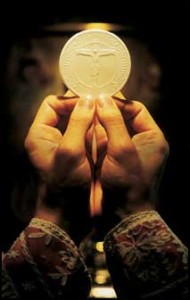 The Vatican II documents remind us that the spiritual journey is not made in a vacuum, that God has chosen to save us, not individually, but as The People of God. The Eucharist must help Christians to make their choices by discerning out of Christ’s paschal mystery. For this process to take place, however, Christians must first understand how the Eucharist puts them in touch with Christ’s passion, death, and resurrection, and what concrete implications being in touch with this mystery has for their daily lives.
The Vatican II documents remind us that the spiritual journey is not made in a vacuum, that God has chosen to save us, not individually, but as The People of God. The Eucharist must help Christians to make their choices by discerning out of Christ’s paschal mystery. For this process to take place, however, Christians must first understand how the Eucharist puts them in touch with Christ’s passion, death, and resurrection, and what concrete implications being in touch with this mystery has for their daily lives.
For more information on the “Institute of Priestly Formation†and for other material available by Deacon Keating, just click here
Don’t forget to pickup a copy of “Communion with Christ†, it is one of the best audio sets on prayer…ever!
Check out Deacon Keating’s “Discerning Heart†page
Tags: choices, creighton university, Deacon James Keating, prayer
This entry was posted on Tuesday, February 5th, 2013 at 6:47 am
You can follow any responses to this entry through the RSS 2.0 feed.
 [powerpress]“Hidden Mountain Secret Garden: a theological contemplation of prayer” helps the reader discover the riches of mental prayer in the Catholic Tradition. In fact, the images of the “Hidden Mountain” and the “Secret Garden” are ancient metaphors for contemplative prayer, a kind of prayer that begins and ends in faith.
[powerpress]“Hidden Mountain Secret Garden: a theological contemplation of prayer” helps the reader discover the riches of mental prayer in the Catholic Tradition. In fact, the images of the “Hidden Mountain” and the “Secret Garden” are ancient metaphors for contemplative prayer, a kind of prayer that begins and ends in faith.
This book is especially for those whose prayer is a search for the loving eyes of One who has conquered death. This kind of prayer beholds the wonder of Christ’s living but hidden presence in one’s highest thoughts and most noble aspirations as well as in one’s instinctual urges and deepest longings. The ecstasy of this kind of prayer extends beyond even the vast unexplored horizons of the human heart and opens to an immensity of such excessive mercy that all else is forgotten — and only love remains.
The whole world needs this love: it is the secret garden, the hidden mountain, the inexhaustible riches only prayer knows and an excess of grace only prayer can make known. This is why Blessed John Paul II told the Church not to be afraid to open wide the doors of our hearts to Christ and it is why He told the young people of the world to be proud to proclaim the Gospel of the Lord. For those brave souls who have faithfully open their hearts to the Lord through this discipline of this kind of prayer, every Christian owes you a debt of gratitude. For those who want to join them, this work encourages you along the way — for the journey you endeavor is at once the most perilous, the most heart-rending and the most wonderful adventure this world has ever known.
Available at Amazon.com as an ebook (click here), a paperback edition (click here).  You may also order a paperback edition at createspace.com.
“Dr. Anthony Lilles has authored an introduction to prayer that is inspiring and encouraging. For those desiring to pray this is a resource that is full of practical advice – written simply and attractively. This book bears the mark of a man – husband, father and teacher – who is not only imbued with the wisdom of the Saints, but who has also, through his own prayer, learned how all of us can, through prayer, foster faith in and love for Jesus and his Gospel.â€
THOMAS G. WEINANDY, O.F.M., CAP. Executive Director for the Secretariat for Doctrine United States Conference of Catholic Bishops
This is a wonderful book. I’ve taught spiritual theology many years and I wish I had had this text use. In fact, I wish I had written this book. It is scriptural, patristic, historical, theological, mystical, experiential and user friendly. Dr. Lilles takes us through the spiritual journey of prayer, citing Fathers and doctors, saints and even sinners to guide us on our Christian way toward contemplation. Weaving many themes into a harmonious whole, he opens up the life of contemplation for all Christians, our baptismal birthright in a way that is accessible and attractive. This is a book one will read more than once.
FR. GILES DIMOCK, O.P., S.T.D University Parish of St. Thomas Aquinas At the University of Virginia
In this book we find the real meat of the new evangelization. The church in America will not be renewed by “facts about Jesus†but only through one’s choice to let Christ reach the heart and change it from within. It is an ancient message received by only few: Do not be afraid of letting go of what now defines you. Let Christ tell you who you are. Dr. Lilles is one of the ablest guides to lead us through to such a choice. Will I stay with knowledge about Jesus or will I enter the garden of prayer and finally come to know Him!! Do not be afraid to be loved, read this book.
DEACON JAMES KEATING, PH.D, Institute for Priestly Formation, Omaha, NE
Tags: Anthony Lilles, contemplation, faith, prayer
This entry was posted on Monday, November 26th, 2012 at 9:54 am
You can follow any responses to this entry through the RSS 2.0 feed.
Episode 7 -The Way of Mystery: The Eucharist and Moral Living– The Liturgy of the Word part 1 Christ entering us through language. The difference in our attitude of being an “audience” and being in an attitude of prayer. How the Word sets us free.
[powerpress]
Deacon James Keating, PhD, the director of Theological Formation for the Institute for Priestly Formation, located at Creighton University, in Omaha, is making available to â€Discerning Hearts†and all who listen, his series of programs entitled “The Way of Mysteryâ€.
 The Vatican II documents remind us that the spiritual journey is not made in a vacuum, that God has chosen to save us, not individually, but as The People of God. The Eucharist must help Christians to make their choices by discerning out of Christ’s paschal mystery. For this process to take place, however, Christians must first understand how the Eucharist puts them in touch with Christ’s passion, death, and resurrection, and what concrete implications being in touch with this mystery has for their daily lives.
The Vatican II documents remind us that the spiritual journey is not made in a vacuum, that God has chosen to save us, not individually, but as The People of God. The Eucharist must help Christians to make their choices by discerning out of Christ’s paschal mystery. For this process to take place, however, Christians must first understand how the Eucharist puts them in touch with Christ’s passion, death, and resurrection, and what concrete implications being in touch with this mystery has for their daily lives.
For more information on the “Institute of Priestly Formation†and for other material available by Deacon Keating, just click here
Don’t forget to pickup a copy of “Communion with Christ†, it is one of the best audio sets on prayer…ever!
Check out Deacon Keating’s “Discerning Heart†page
Tags: choices, creighton university, Deacon James Keating, prayer
This entry was posted on Tuesday, November 13th, 2012 at 2:41 pm
You can follow any responses to this entry through the RSS 2.0 feed.
Tags: all saints, litany of saints, prayer
This entry was posted on Thursday, November 1st, 2012 at 12:08 am
You can follow any responses to this entry through the RSS 2.0 feed.
Episode 2 – Roots of the Faith: The Mass: the Universal Sign 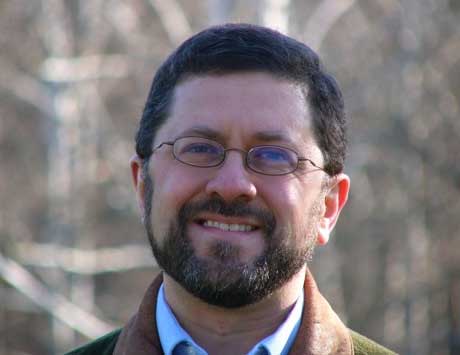
[powerpress]
Roots of the Faith – From the Church Fathers to You with Mike Aquilina, makes clear that just as an acorn grows into a tree and yet remains the same plant, so the Catholic Church is a living organism that has grown from the faith of the earliest Christians into the body of Christ we know today. Hosted by Kris McGregor
Also visit Mike’s “Discerning Hearts” page for more audio downloads and information!
Tags: prayer, st. paul center for biblical theology
This entry was posted on Thursday, October 4th, 2012 at 6:19 am
You can follow any responses to this entry through the RSS 2.0 feed.
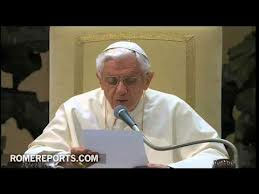 (Vatican Radio) – The Liturgy is the school of prayer where God Himself teaches us to pray. But in order to celebrate the Liturgy well, to really experience the re-enactment of Christ’s Paschal Mystery we must make our hearts God’s Altar and understand that the Liturgy is the action of God and of man, as the Second Vatican Council teaches us. In his latest instalment in his cycle on the School of Prayer, Pope Benedict XVI dedicated his Wednesday audience to prayer and the liturgy. Emer McCarthy reports:
(Vatican Radio) – The Liturgy is the school of prayer where God Himself teaches us to pray. But in order to celebrate the Liturgy well, to really experience the re-enactment of Christ’s Paschal Mystery we must make our hearts God’s Altar and understand that the Liturgy is the action of God and of man, as the Second Vatican Council teaches us. In his latest instalment in his cycle on the School of Prayer, Pope Benedict XVI dedicated his Wednesday audience to prayer and the liturgy. Emer McCarthy reports:
[powerpress = “Vatican_Radio”]
Below a Vatican Radio translation of the Holy Father’s catechesis:
Dear Brothers and Sisters,
in recent months we have made a journey in the light of the Word of God, to learn to pray in a more authentic way by looking at some great figures in the Old Testament, the Psalms, the Letters of St. Paul and the Book of Revelation, but also looking at unique and fundamental experience of Jesus in his relationship with the Heavenly Father. In fact, only in Christ, is man enabled to unite himself to God with the depth and intimacy of a child before a father who loves him, only in Him can we turn in all truth to God and lovingly call Him “Abba! ! Father. ” Like the Apostles, we too have repeated and we still repeat to Jesus, “Lord, teach us to pray” (Lk 11:1).In addition, in order to live our personal relationship with God more intensely, we have learned to invoke the Holy Spirit, the first gift of the Risen Christ to believers, because it is he who “comes to the aid of our weakness; for we do not know how to pray as we ought,”(Romans 8:26).
At this point we can ask: how can I allow myself to be formed by the Holy Spirit? What is the school in which he teaches me to pray and helps me in my difficulties to turn to God in the right way? The first school of prayer which we have covered in the last few weeks is the Word of God, Sacred Scripture, Sacred Scripture in permanent dialogue between God and man, an ongoing dialogue in which God reveals Himself ever closer to us. We can better familiarize ourselves with his face, his voice, his being and the man learns to accept and to know God, to talk to God. So in recent weeks, reading Sacred Scripture, we looked for this ongoing dialogue in Scripture to learn how we can enter into contact with God.
There is another precious “space”, another valuable “source” to grow in prayer, a source of living water in close relation with the previous one. I refer to the liturgy, which is a privileged area in which God speaks to each of us, here and now, and awaits our response.
What is the liturgy? If we open the Catechism of the Catholic Church – an always valuable and indispensable aid especially in the Year of Faith, which is about to begin – we read that originally the word “liturgy” means ” service in the name of/on behalf of the people” (No. 1069) . If Christian theology took this word from the Greek world, it did so obviously thinking of the new People of God born from Christ opened his arms on the Cross to unite people in the peace of the one God. “service on behalf of the people ” a people that does not exist by itself, but that has been formed through the Paschal Mystery of Jesus Christ. In fact, the People of God does not exist through ties of blood, territory or nation, but is always born from the work of the Son of God and communion with the Father that He obtains for us.
The Catechism also states that “in Christian tradition (the word” liturgy “) means the participation of the People of God in “the work of God.” Because the people of God as such exists only through the action of God.
Tags: liturgy, pope benedict xvi, prayer, school of prayer
This entry was posted on Wednesday, September 26th, 2012 at 10:31 am
You can follow any responses to this entry through the RSS 2.0 feed.
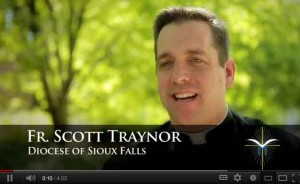 Fr. Scott Traynor from the Institute for Priestly Formation describes the 3 levels of the heart.
Fr. Scott Traynor from the Institute for Priestly Formation describes the 3 levels of the heart.
Tags: creighton university, institute for priestly formation, prayer
This entry was posted on Saturday, September 15th, 2012 at 5:39 am
You can follow any responses to this entry through the RSS 2.0 feed.
[powerpress = “Vatican_Radio”]
VATICAN CITY, SEPT. 12, 2012 (Zenit.org).- Here is a translation of the address Benedict XVI gave today in Paul VI Hall at the general audience. The Holy Father today continued his reflection on prayer in the book of Revelation.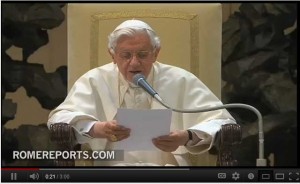
* * *
Dear brothers and sisters,
Last Wednesday I spoke about prayer in the first part of Revelation. Today we move on to the second part of the book; and whereas in the first part, prayer is oriented toward the Church’s inner life, in the second, attention is given to the entire world; the Church, in fact, journeys through history; she is part of it, in accordance with God’s plan.
The assembly that listened to John’s message presented by the reader rediscovered its duty to cooperate in the expansion of the Kingdom of God, as “priests of God and of Christ” (Revelation 20:6; cf. 1:5; 5:10) and it opens out to the world of men. And here, in the dialectical relationship that exists between them, two ways of living emerge: the first we may define as the “system of Christ,” to which the assembly is happy to belong; and the second, the “worldly systems opposed to the kingdom and the covenant and activated through the influence of the Evil One,” who by deceiving men wills to establish a world opposed to the one willed by Christ and by God (cf. Pontifical Biblical Commission, The Bible and Morality, Biblical Roots of Christian Conduct, 70).
The assembly must therefore know how to interpret in depth the history it is living, by learning to discern events with faith in order to cooperate by its action in the growth of the Kingdom of God. And this work of interpretation and discernment, as well as action, is linked to prayer.
First, after the insistent appeal of Christ, who in the first part of Revelation said seven times: “He who has an ear, let him hear what the Spirit says to the Church” (cf. Revelation 2:7,11,17,29; 3:6,13,22), the assembly is invited to ascend to Heaven, to look upon reality through God’s eyes; and here we discover three symbols, reference points from which we may begin to interpret history: the throne of God, the Lamb and the book (cf. Revelation4:1 – 5:14).
The first symbol is the throne, upon which there is seated a person John does not describe, for he surpasses every human representation. He is only able to note the sense of beauty and joy he experiences in His presence. This mysterious figure is God, God Almighty who did not remain enclosed within His heaven but who drew close to man, entering into a covenant with him; God who makes his voice — symbolized by thunder and lightning — heard in history, in a mysterious but real way. There are various elements that appear around the throne of God, such as the twenty-four elders and the four living creatures that unceasingly render praise to the one Lord of history.
The first symbol, then, is the throne. The second symbol is the book, which contains the plan of God for events and for men. It is hermetically sealed with seven seals, and no one is able to read it. Faced with man’s inability to scrutinize the plan of God, John experiences a deep sadness, which causes him to weep. But there is a remedy for man’s dismay before the mystery of history: there is one who is able to open the book and shed light on it.
And here the third symbol appears: Christ, the Lamb immolated in the sacrifice of the Cross, but who stands as a sign of his Resurrection. And it is the Lamb, Christ who died and rose, who gradually opens the seals and unveils the plan of God, the deep meaning of history.
What do these symbols tell us? They remind us of the path to knowing how to interpret the facts of history and of our own lives. By raising our gaze to God’s heaven in a constant relationship with Christ, by opening our hearts and our minds to him in personal and communal prayer, we learn to see things in a new way and to grasp their truest meaning. Prayer is like an open window that allows us to keep our gaze turned toward God, not only for the purpose of reminding us of the goal toward which we are directed, but also to allow the will of God to illumine our earthly journey and to help us to live it with intensity and commitment.
How does the Lord guide the Christian community to a deeper reading of history? First and foremost, by inviting it to consider with realism the present moment we are living. Therefore, the Lamb opens the four first seals of the book, and the Church sees the world in which it is inserted, a world in which various negative elements exist. There the evils that man commits, such as violence, which comes from the desire to possess, to prevail against one another to the point of killing one another (second seal); or injustice, as men fail to respect the laws that are given them (third seal). To these are added the evils that man must undergo, such as death, hunger and sickness (fourth seal). Faced with these oftentimes dramatic realities, the ecclesial community is invited to never lose hope, to believe firmly that the apparent omnipotence of the Evil One collides with the true omnipotence, which is God’s.
And the first seal the Lamb opens contains precisely this message. John narrates: “And I saw, and behold, a white horse, and its rider had a bow; and a crown was given to him, and he went out conquering and to conquer” (Revelation 6:2). The power of God has entered into the history of man, [a power] which is not only capable of offsetting evil, but even of conquering it. The color white recalls the Resurrection: God drew so near to us that he descended into the darkness of death in order to illumine it with the splendor of his divine life: he took the world’s evil upon himself in order to purify it with the fire of his love.
How do we grow in this Christian understanding of reality? Revelation tells us that prayer nourishes this vision of light and profound hope in each one of us and in our communities: it invites us to not allow ourselves to be overcome by evil, but to overcome evil with good, to look to the Crucified and Risen Christ, who associates us in his victory. The Church lives in history, she is not closed in on herself; but rather, she courageously faces her journey amid difficulties and suffering, by forcefully affirming that ultimately, evil does not conquer the good, darkness does not dim the splendor of God.
This is an important point for us; as Christians we can never be pessimists; we know well that along life’s journey we often encounter violence, falsehood, hate and persecution, but this does not discourage us. Above all, prayer teaches us to see the signs of God, of his presence and action; indeed, to be lights of goodness that spread hope and point out that the victory is God’s.
Tags: book of revelation, pope benedict xvi, prayer
This entry was posted on Thursday, September 13th, 2012 at 8:58 am
You can follow any responses to this entry through the RSS 2.0 feed.
The importance of his life and contribution to the Church cannot be overstated. St. Augustine, one of the greatest of the Church Fathers, has not only influenced the Church, but the thought of the world as we know it. The story of his conversion as chronicled in his “Confessions”, would be 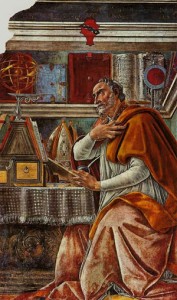 enough, but then add the body of his theological work and you have nothing less than a glimpse of what is truly the power of “grace and mercy”.
enough, but then add the body of his theological work and you have nothing less than a glimpse of what is truly the power of “grace and mercy”.
Mike Aquilina is one of the best at bringing this great saint’s life into perspective.
For a more detail accounting of St. Augustine’s  life, you can visit Lives of the Saints
Spiritual Writings:
-Â ConfessionsÂ
-Â Letters
-Â City of God
-Â Christian Doctrine
-Â On the Holy Trinity
-Â The Enchiridion
-Â On the Catechising of the Uninstructed
-Â On Faith and the Creed
-Â Concerning Faith of Things Not Seen
-Â On the Profit of Believing
-Â On the Creed: A Sermon to Catechumens
-Â On Continence
-Â On the Good of Marriage
-Â On Holy Virginity
-Â On the Good of Widowhood
-Â On Lying
-Â To Consentius: Against Lying
-Â On the Work of Monks
-Â On Patience
-Â On Care to be Had For the Dead
-Â On the Morals of the Catholic Church
-Â On the Morals of the Manichaeans
-Â On Two Souls, Against the Manichaeans
-Â Acts or Disputation Against Fortunatus the Manichaean
-Â Against the Epistle of Manichaeus Called Fundamental
-Â Reply to Faustus the Manichaean
-Â Concerning the Nature of Good, Against the Manichaeans
-Â On Baptism, Against the Donatists
-Â Answer to Letters of Petilian, Bishop of Cirta
-Â Merits and Remission of Sin, and Infant Baptism
-Â On the Spirit and the Letter
-Â On Nature and Grace
-Â On Man’s Perfection in Righteousness
-Â On the Proceedings of Pelagius
-Â On the Grace of Christ, and on Original Sin
-Â On Marriage and Concupiscence
-Â On the Soul and its Origin
-Â Against Two Letters of the Pelagians
-Â On Grace and Free Will
-Â On Rebuke and Grace
-Â The Predestination of the Saints/Gift of Perseverance
-Â Our Lord’s Sermon on the Mount
-Â The Harmony of the Gospels
-Â Sermons on Selected Lessons of the New Testament
-Â Tractates on the Gospel of John
-Â Homilies on the First Epistle of John
-Â Soliloquies
-Â The Enarrations, or Expositions, on the Psalms
For me, out of all the St. Augustine’s work, this is the piece that deeply touches my heart and is one of my all-time favorite prayers:
Late Have I Loved You
A Prayer of Saint Augustine
Late have I loved you, O Beauty, so ancient and so new, late have I loved you!
And behold, you were within me and I was outside, and there I sought for you, and in my deformity I rushed headlong into the well-formed things that you have made.
You were with me, and I was not with you. Those outer beauties held me far from you, yet if they had not been in you, they would not have existed at all.
You called, and cried out to me and broke open my deafness; you shone forth upon me and you scattered my blindness.
You breathed fragrance, and I drew in my breath and I now pant for you.
I tasted, and I hunger and thirst; you touched me, and I burned for your peace.
This prayer is from his book, “Confessions.”
                         Â
Tags: confessions, conversion, fathers mike, grace and mercy, mike aquilina, our sunday visitor, prayer, st augustine
This entry was posted on Tuesday, August 28th, 2012 at 12:22 am
You can follow any responses to this entry through the RSS 2.0 feed.
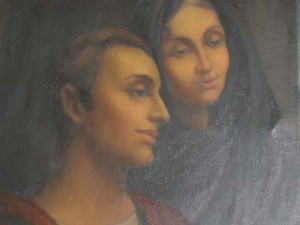 St. Monica (331-387) a “shining light of Christ” example of perserverance in prayer! We have her as an outstanding model of never giving up…what a gift to us! Today we can turn to her and see what sticking to it can do, but did you ever think, “Who was her example?” She didn’t know how the story of her son, St. Augustine would turn out. She didn’t know that he would be transformed by grace into one of the greatest Doctors of the Church  who ever lived. Monica must have become frustrated, and at times filled with anxiety and maybe even  a degree of despair, but she persevered through it all! She surely suffered emotionally for her lost son, but she never gave up her hope in God and faith in His promises…the energy of her love for her son fueled her prayer and grace transformed his seeking heart. It took 30 years, but it happened.
St. Monica (331-387) a “shining light of Christ” example of perserverance in prayer! We have her as an outstanding model of never giving up…what a gift to us! Today we can turn to her and see what sticking to it can do, but did you ever think, “Who was her example?” She didn’t know how the story of her son, St. Augustine would turn out. She didn’t know that he would be transformed by grace into one of the greatest Doctors of the Church  who ever lived. Monica must have become frustrated, and at times filled with anxiety and maybe even  a degree of despair, but she persevered through it all! She surely suffered emotionally for her lost son, but she never gave up her hope in God and faith in His promises…the energy of her love for her son fueled her prayer and grace transformed his seeking heart. It took 30 years, but it happened.
A few months after his conversion, Augustine, Monica and Adeodatus (her other son), set out to return to Africa, but Monica died at Ostia, the ancient port city of Rome, and she was buried there. Some pictures show her so old, but when you think of it, she was only 56 when she died. Augustine was so deeply moved by his mother’s death that he was inspired to write his Confessions, “So be fulfilled what my mother desired of me–more richly in the prayers of so many gained for her through these confessions of mine than by my prayers alone” (Book IX.13.37)
An account of Monica’s early life, her childhood, marriage, her final days and her death, is given in Confessions Book IX, 8-12. He expresses his gratitude for her life:
“I will not speak of her gifts, but of thy gift in her; for she neither made herself nor trained herself. Thou didst create her, and neither her father nor her mother knew what kind of being was to come forth from them. And it was the rod of thy Christ, the discipline of thy only Son, that trained her in thy fear, in the house of one of thy faithful ones who was a sound member of thy Church” (IX.8.7).
Centuries later, Monica’s body was brought to Rome, and eventually her relics were interred in a chapel left of the high altar of the Church of St. Augustine in Rome (see below).
Tags: catholic, catholic podcast, catholic prayer, cathollc spirituality, confessions, conversion, prayer, relics, st augustine, st monica
This entry was posted on Monday, August 27th, 2012 at 12:14 am
You can follow any responses to this entry through the RSS 2.0 feed.

